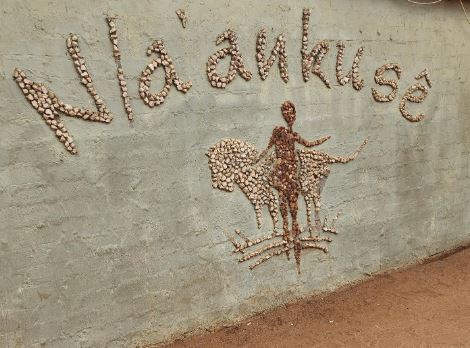Only in dreams has the continent of Africa been a possibility for me to visit and learn in. The study abroad program with St. Petersburg College in Namibia became an opportunity for those dreams to become a reality. As a student and as a person, this has been a life-changing event for me. It also was my first time leaving my country, something thrilling on its own merits.
Arrival on the 7th of December from our various destinations was uneventful, and once settled we were given an opportunity to rest. Our orientation would be the following morning with Heidi after breakfast at the Lapa. At orientation we were given an idea of what activities would be available to us, where and when to meet, and that we would be on various teams. Our day on the 8th was relatively open and participation in the baboon enrichment walk was our introduction to the activities. Activities could include meal preparation for the various species present, enclosure cleaning, project work (waterhole digging/ building, putting up fencing, etc.), feeding both the small and large animals (small animal feeding and carnivore feeding). Going forward, we had opportunities to be a part of the anti-poaching unit (APU); learning about poaching and the many reasons behind it, work with the dogs, carnivore feeding, small animal feeding, enclosure care, and enrichment opportunities for cheetah, baboon, and caracal. We were also given the opportunity to learn about in-field tranquilization and transport of wildlife from the lead veterinarian, Dr. Maaike De Schepper.
N/a’an ku sê is a San word that means “God will protect us”. The sanctuary houses several different animal species that have, in one way or another, been a part of human – animal conflict or taken into the pet trade within the country of Namibia. Some of these animals are orphans, particularly the baboons. In many places they are considered pests, and are often shot, only to find there is a baby left behind. Other animals were bought from street vendors as cute babies to be pets, often by individuals that did not understand the social structure of the animals (meerkats), that they can and do bite, and that they can be destructive. Some of these animals have become habituated to people, and this can create a potential for conflict. Apollo, one of the elephants on the Zannier Reserve was in exactly this situation when he made a golf course in Swakopmund his home. N/a’an ku sê was asked to remove him for his safety and that of the people and now he walks the 18,533 acres of the reserve with other elephants.
Others have found prey on farms to be much easier to catch and were captured for their safety and relocated to the sanctuary.
My favorite activities were enrichment for the larger cats and going into the bush with the APU. There is nothing like walking with cheetahs or coming up on a fresh lion kill site and seeing these animals in their natural habitat.
With respect to in-country interactions with the people and animals on the sanctuary and various reserve areas, I found everyone to be highly knowledgeable and willing to share information and answer questions. Dr. Maaike, the lead veterinarian, was very approachable and very willing to share her knowledge. I felt very welcome and comfortable here.
If the opportunity comes up, I recommend the study abroad program. It will change your life.
Pamela, SPC Namibia Study Abroad Program 2023 Participant
#Dream #True #Center #International #Programs





More Stories
List of Cheapest Cities in Australia for International Students in 2024 | Admissify
MECKLENBURG-VORPOMMERN
Study Abroad Blog | Study Abroad Experiences, Advice & Tips